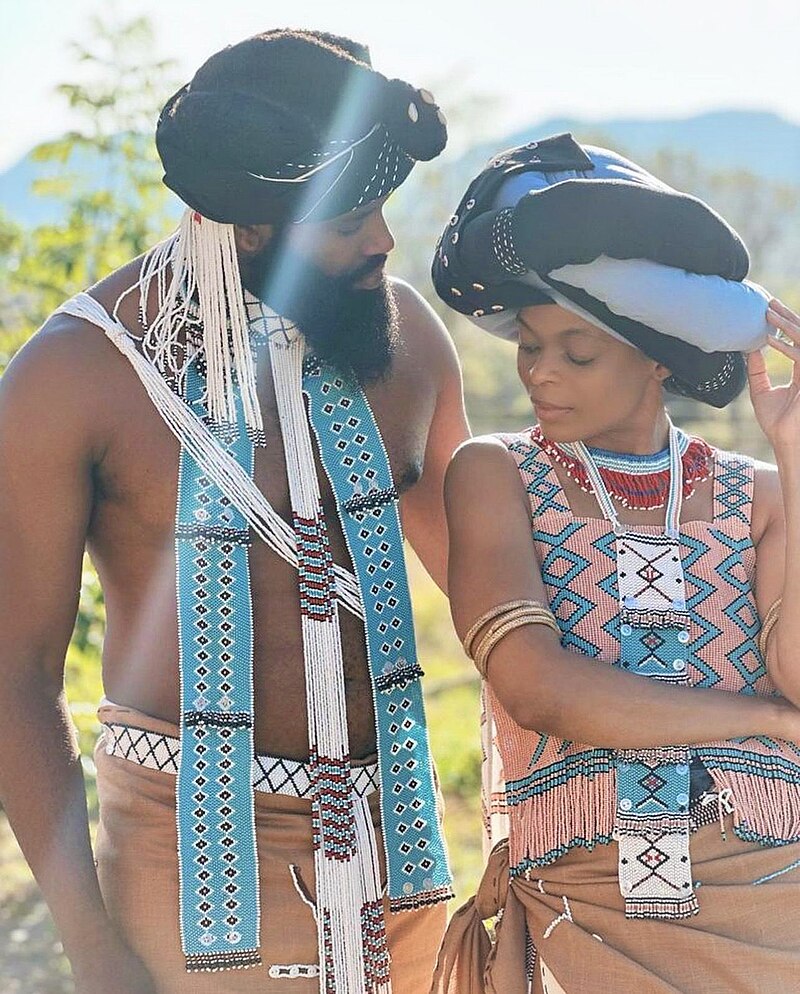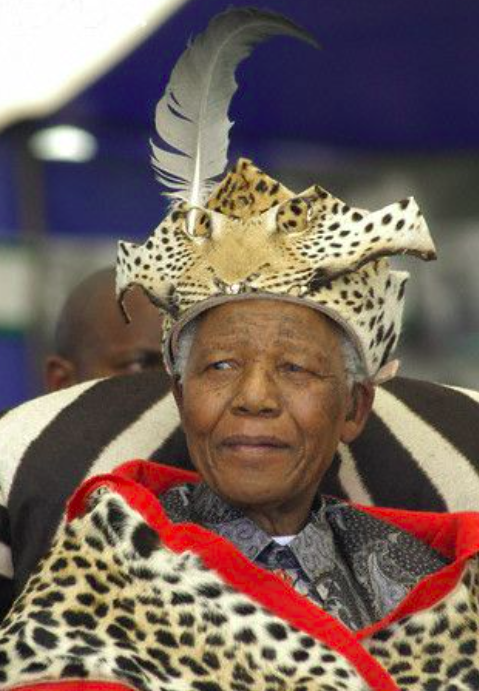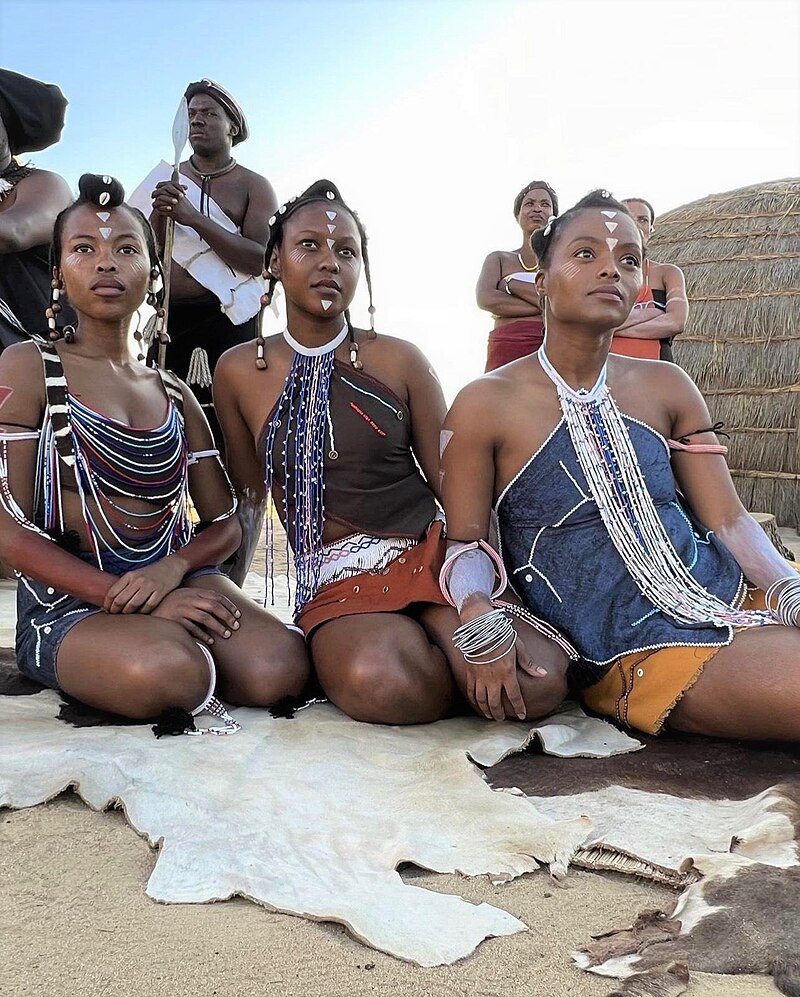
What is Xhosa Traditional Attire?
Xhosa traditional attire refers to the clothing worn by the Xhosa people of South Africa, who are known for their rich cultural heritage. This attire holds great significance as it represents the Xhosa culture and traditions, playing a vital role in their social and ceremonial events.
The traditional clothing embodies a sense of pride and serves as a visual expression of the Xhosa people’s cultural identity. Xhosa women, in particular, are known for their exquisite and vibrant traditional dresses, often adorned with intricate beadwork and patterns that showcase their creativity and artistic skills.
The attire typically consists of a top, a skirt, and accessories such as beaded bracelets or a head wrap.
The use of vivid colors, patterns, and various materials such as animal skins or African fabrics adds to the beauty and uniqueness of Xhosa traditional attire.
It is not uncommon to see Xhosa women wearing these traditional outfits during special occasions such as weddings, cultural events, or initiation ceremonies, as they proudly embrace their heritage and keep these traditions alive for generations to come.

A Brief History of Xhosa Culture
The Xhosa people are part of the Nguni ethnic group originating from the southeastern region of South Africa. With a rich and vibrant history, Xhosa culture is deeply rooted in traditional practices and beliefs.
The origins of Xhosa culture can be traced back to the earliest ancestors who settled in the Eastern Cape region, where the environment greatly influenced their way of life. The Xhosa people relied on agrarian practices, cattle herding, and hunting, which shaped their cultural traditions and customs.
However, the arrival of European colonialists in the 18th century brought significant changes to Xhosa culture. The introduction of Christianity, Western clothing, and modern technology all played a role in the transformation of traditional practices. This fusion of old and new resulted in a unique cultural identity which evolves to this day.
Xhosa attire is a striking reflection of this cultural identity. Traditional outfits often feature intricate beadwork, multi-coloured beads, and bold geometric patterns. Women typically wear elegant dresses with fish-cut skirts, while the upper bodies are adorned with beautiful beadwork. Men also showcase their cultural pride through beaded bracelets and traditional clothing.
Xhosa attire is not only worn during special occasions such as Xhosa weddings and initiation ceremonies but also serves as a representation of cultural heritage in everyday life. With the influence of contemporary fashion, Xhosa women have embraced a modern twist, incorporating elements such as vibrant colors and unique designs into their traditional dresses.
In conclusion, Xhosa culture and attire have a deep connection to the past while adapting to the present. It continues to play a significant role in the preservation of the Xhosa cultural heritage, highlighting the resilience and beauty of this vibrant community.
Types of Traditional Xhosa Clothing
Xhosa traditional clothing encompasses a variety of styles and designs that demonstrate a rich cultural heritage of the Xhosa people. From intricate beadwork to vibrant colors and unique patterns, these traditional garments are a visual representation of their history and customs. Let’s explore some of the notable types of traditional clothing worn by the Xhosa community.
1. Xhosa Dresses: Xhosa women are particularly known for their beautiful dresses, which often feature fish-cut skirts and exquisite beadwork. These dresses come in a range of colors and designs, showcasing the creativity and craftsmanship of the Xhosa people. The upper bodies of these dresses are adorned with multi-colored beads and intricate patterns, making them truly eye-catching.
Browse Xhosa Dresses at Etsy
2. Traditional Wedding Attires: Xhosa weddings are a significant cultural event, and traditional attire plays a central role in these celebrations. The bride usually wears a stunning xhosa wedding dress, which is often a white or blue fabric adorned with intricate beadwork. The groom, on the other hand, wears a traditional suit accompanied by a beaded bracelet, symbolizing his cultural pride.

3. Initiation Ceremonies: Initiation ceremonies are an important rite of passage for young Xhosa boys and girls. During these ceremonies, traditional clothing is worn to signify the transition from boyhood to adulthood. Boys often wear leather loincloths or animal skin coverings, while girls don colorful wraps and intricately beaded necklaces, symbolizing their readiness for adulthood.
4. Informal Events and Everyday Wear: Xhosa traditional clothing is not only reserved for special occasions but is also worn in everyday life to celebrate cultural identity. Women may opt for more casual outfits such as colorful skirts paired with a traditional top, while men can be seen in shirts or jackets adorned with distinct Xhosa patterns.
Xhosa traditional clothing is a beautiful expression of the rich cultural heritage of the Xhosa people.
These garments, ranging from elegant dresses to unique beaded accessories, serve as a visual reminder of their history, customs, and sense of identity.
Animal Skin Outfits
The Animal Skin Outfit holds great significance in Xhosa culture, serving as a reflection of the historical and cultural importance placed on traditional attire. Specifically, for men, these garments carry a deep sense of identity and pride.
The animal skin attire is crafted from various animal hides, each with its own symbolic meaning. Leopard skins, for example, represent royalty and leadership, while sheep and goat skins symbolize abundance and prosperity. The skins are meticulously chosen, cleaned, and transformed into garments that are both practical and ceremonial.
Historically, animal skin outfits were worn by Xhosa warriors as a display of strength and courage. They served as a visual representation of traditional masculinity and the connection to nature. The wearing of these outfits was also linked to certain social roles within the community.

Today, the Animal Skin Outfit still plays a significant role in Xhosa culture during ceremonial events such as initiation ceremonies and traditional rituals. It serves as a powerful reminder of the cultural heritage and ancestral ties that the Xhosa people cherish.
In conclusion, the Animal Skin Outfit in Xhosa culture holds historical importance and carries deep cultural significance. With its symbolic meaning and connection to traditional masculinity, it serves as a reminder of the heritage of the Xhosa people and their strong sense of identity.
Upper Bodies Garments
In Xhosa traditional attire, there are various styles of upper bodies that are worn to complete the traditional outfit. These upper body garments include tops, blouses, and jackets, all of which showcase the rich cultural heritage of the Xhosa people.
One distinctive feature of these upper body garments is the use of African fabrics. These fabrics are meticulously chosen for their vibrant unique designs, which ar inspired by nature or feature geometric patterns. Additionally, intricate beadwork is commonly incorporated into the garments, adding an extra level of beauty and cultural significance.
These upper body garments are typically worn in combination with skirts or pants. For formal occasions, women may opt for a matching set, consisting of a top and a skirt made from the same fabric. This creates a cohesive and elegant look that highlights the traditional Xhosa aesthetic. On the other hand, for more casual and everyday wear, Xhosa women may choose to pair a blouse or a jacket with pants, creating a more modern and contemporary twist on the traditional attire.
Overall, Xhosa traditional attire is a celebration of cultural identity and a reflection of the vibrant Xhosa culture. The upper body garments made from African fabrics, featuring vibrant colors and intricate beadwork, play a key role in completing the traditional outfit and showcasing the beauty of Xhosa craftsmanship.
Keywords: Xhosa traditional attire, upper bodies, tops, blouses, jackets, African fabrics.
White Dresses
In Xhosa culture, traditional weddings are a momentous occasion filled with symbolism and rich customs. One of the most significant aspects of a Xhosa wedding is the white dress worn by the bride. This long-sleeved attire holds great cultural significance and is designed to cover the entire body of the bride, excluding her face.
The white dress represents purity, innocence, and the beginning of a new chapter in the bride’s life. It signifies the transition from girl to woman and the bride’s readiness to embrace her marital responsibilities. The dress is carefully crafted, often made from luxurious fabrics and adorned with intricate beadwork, displaying the craftsmanship and creativity of the Xhosa people.
Accompanying the white dress is a beaded tartan blanket, which features unique Xhosa patterns and adds an beautiful touch of elegance to the bride’s attire. This beaded tartan blanket not only serves as a decorative accessory but also symbolizes the bride’s connection to her ancestors and the protection they provide on her wedding day.
Overall, the white dress in Xhosa culture represents the bride’s cultural identity, her commitment to her marital vows, and the beauty of Xhosa traditions. It is a time-honored symbol of love, celebration, and the continuation of cultural heritage.
African Clothing
African clothing is rich in cultural significance and diversity, and the Xhosa traditional attire is no exception. This vibrant and intricate attire is a reflection of the Xhosa culture, with its mixture of beaded fabric, aprons, and long skirts.
Xhosa traditional attire predominantly features a palette of white, black, yellow, red, and blue, each color representing different elements important to the culture. White symbolizes purity and spiritual enlightenment, black represents ancestral spirits, yellow signifies fertility and wealth, red symbolizes the passage from boyhood to manhood, and blue represents spirituality and protection.
The Xhosa costume for both males and females incorporates beaded accessories that add an extra layer of beauty and symbolism. Beaded capes, jackets, headbands, neckpieces, and wands are commonly worn to enhance the Xhosa traditional attire. These beaded accessories are meticulously crafted with multi-colored beads and intricate designs, showcasing the exceptional skill of Xhosa artisans.
For women, the attire often includes a beaded bodice with a flowy skirt and apron. The skirts are typically long and can feature bold geometric patterns or delicate beadwork. Men, on the other hand, wear a long shirt, trousers, beaded belt, and beaded accessories to complete their Xhosa traditional attire.
The Xhosa traditional attire not only preserves the cultural identity but also adds a touch of elegance and beauty to any special occasion or cultural event. The vibrant colors and stunning beadwork make these garments a true work of art, perfectly reflecting the uniqueness of Xhosa culture and its rich traditions.

Multi-Coloured Beads and Patterns
Multi-coloured beads and patterns play a significant role in Xhosa traditional attire, symbolizing the rich cultural heritage and values of the Xhosa people. These beads are more than just decorative elements; they represent unity, love, and community values.
Beadwork holds immense cultural importance in Xhosa society, and it is seen in various forms such as necklaces, bracelets, and headbands worn as accessories. These intricate bead designs are meticulously crafted, showcasing the exceptional skill of Xhosa artisans.
The multi-coloured beads used in Xhosa traditional attire hold deep meanings. Each color represents different aspects of life and spirituality. Red beads symbolize love and passion, while green represents fer